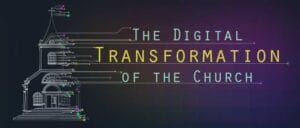How Has Technology Impacted Religion in Modern Society and Belief Practices

Nearly every element of human life has changed in a world where technology is advancing at a breakneck pace. This includes how we communicate, shop, learn, and even express our beliefs. Even though religion is frequently seen as timeless and unalterable, it has changed over time. Technology has a significant and wide-ranging impact on religion, changing the dynamics of worship, religious authority, and interpersonal relationships.
However, what does this signify for contemporary religious practices? Let’s explore how faith and innovation can coexist.
The Digital Transformation of Worship Spaces

Previously limited to physical locations such as synagogues, churches, temples, and mosques, religious experiences are now occurring online. The experience of spirituality has transcended conventional boundaries, whether through virtual pilgrimages, religious applications, or livestreamed sermons.
The following table describes the ways in which various religions have embraced technology in the present era:
| Religion | Technological Integration | Modern Practice Examples |
| Christianity | Livestream services, Bible apps, VR church spaces | Sunday services via YouTube, Bible study on mobile apps |
| Islam | Prayer reminder apps, Quran recitation tools, online fatwas | Ramadan countdown apps, digital Qibla compass |
| Hinduism | Virtual temple visits, online puja offerings, spiritual podcasts | Attending Aarti on Facebook Live, YouTube Gita lectures |
| Buddhism | Meditation apps, online Dharma talks | guided meditations using applications such as Insight Timer or Headspace |
| Judaism | Zoom Shabbat, digital Torah scrolls, Jewish learning platforms | Online Yeshiva classes, virtual Bar/Bat Mitzvah ceremonies |
As you can see, various religions are utilizing contemporary resources to interact with their followers in novel, frequently international ways in addition to maintaining tradition. The change is changing the fundamental character of religious experience, not just making things more convenient.
Social Media: A New Pulpit for Preachers and Practitioners
Social media has had one of the most noticeable technological impacts on religion. Clergy and religious leaders now reach millions of people in real time by preaching on platforms like X (formerly Twitter), Instagram, and TikTok. Spiritual messages are transformed into digestible, shareable content, devotionals are shared in reels, and religious hashtags are popular.
This communication isn’t one-way, though. Followers interact with religious leaders, exchange testimonies, and pose inquiries. Although this interaction strengthens online communities, it also calls into question religious authority, authenticity, and the spread of false information.
Artificial Intelligence and Religious Practice
AI is also starting to encroach on spiritual life. Technology is changing how people look for solace, answers, and connections, from chatbots that provide spiritual guidance to AI-generated prayers and sermons. Some worry that this lessens the human element of faith, while others see it as a step forward.
While robotic priests perform blessings and chants in Asian temples, some churches even use facial recognition to monitor attendance. Some people find it a little unnerving, but others find it fascinating. Are machines really sacrosanct vessels? Or are they merely instruments for a bigger purpose?
Religious Education in the Digital Era
Theological knowledge has never been more accessible thanks to technology. Digital libraries, religious webinars, and online seminary courses increase public access to sacred texts and teachings. Nowadays, all you need is an internet connection, as opposed to the days when you had to travel long distances or be a member of elite institutions.
Believers everywhere are becoming more empowered as a result of the democratization of religious education, which makes it possible for in-depth comprehension and individual study. However, there are drawbacks as well: not all information found online is reliable, and conflicting interpretations can occasionally cause misunderstandings or division.
Faith Communities Beyond Geography
The way that technology fosters the development of international faith communities is arguably one of the most exquisite developments in religious life. Nigerian Christians can join a Canadian group for Bible study. In California, a Japanese Buddhist can practice meditation in real time with a teacher. An imam in Indonesia can serve as a mentor to a Muslim convert living in Europe.
Particularly for those who might feel alone, like converts, citizens of nations with restrictive laws, or LGBTQ+ individuals navigating their faith, these online communities provide solace and camaraderie.
Digital Rituals and Virtual Pilgrimages

Ritual performance has also been altered by technology. Online confession sessions, remote blessings through video calls, and virtual pilgrimages to Mecca or Jerusalem are all examples of how tradition is changing to accommodate a connected world.
Some contend that the shift to digital technology may lessen the holiness of these rituals, while others assert that it makes them more accessible to people who would otherwise be unable to pay for or physically oversee such trips.
Challenges and Ethical Concerns
The combination of technology and religion has its own set of ethical issues, despite the many benefits:
- Spirituality being commercialized: Premium subscriptions are frequently included with apps and courses.
- Misinformation: Not all online spiritual content is truthful or well-meaning.
- Privacy: Data security concerns are raised by religious apps’ use of facial recognition and user tracking.
- Dependency on technology: What would happen in the event of a blackout if everything became digital? Does faith now depend on Wi-Fi?
These problems are urgent and real. Faith should not be replaced by technology.
Wrapping Up
Once seen as mutually exclusive, technology and religion are now more entwined than ever. Time and place no longer define faith. People use apps to pray, watch livestreams of religious services, and use AI-guided meditations or digital sermons to find solace. Even though there are still obstacles, the evolution is still ongoing. In the digital age, religion is not disappearing; rather, it is changing, evolving, and becoming even more individualized in certain respects.
FAQs:
What effects has technology had on worship?
A: Technology has made worship more accessible but also less conventional in format by enabling online services, scripture applications for smartphones, and virtual participation in religious events.
Is it possible for religious faith to be strengthened by social media?
A: It can, indeed. Social media helps communities feel more connected in their faith, promotes global connections, and makes it possible to share daily devotionals.
Are virtual religious experiences regarded as legitimate?
A: Views differ. While some religious groups emphasize the significance of physical presence in rituals, others accept them as legitimate because they are easily accessible.
What part does artificial intelligence currently play in religion?
A: AI is utilized for tasks such as creating sermons, virtual guidance, and automated prayers. But there is disagreement about its spiritual depth within
What is the use of technology by religious leaders?
A lot of people now use apps or social media to interact with followers worldwide, host online study groups, and stream sermons.
Is it safe to use religious apps?
A: The majority are secure, but users should exercise caution when it comes to data tracking and permissions, and make sure the source is a reputable religious institution.
Has technology improved or worsened long-standing religious customs?
A: Both. Although it has made religion more accessible, it might lessen the physical and communal components of traditional worship.




